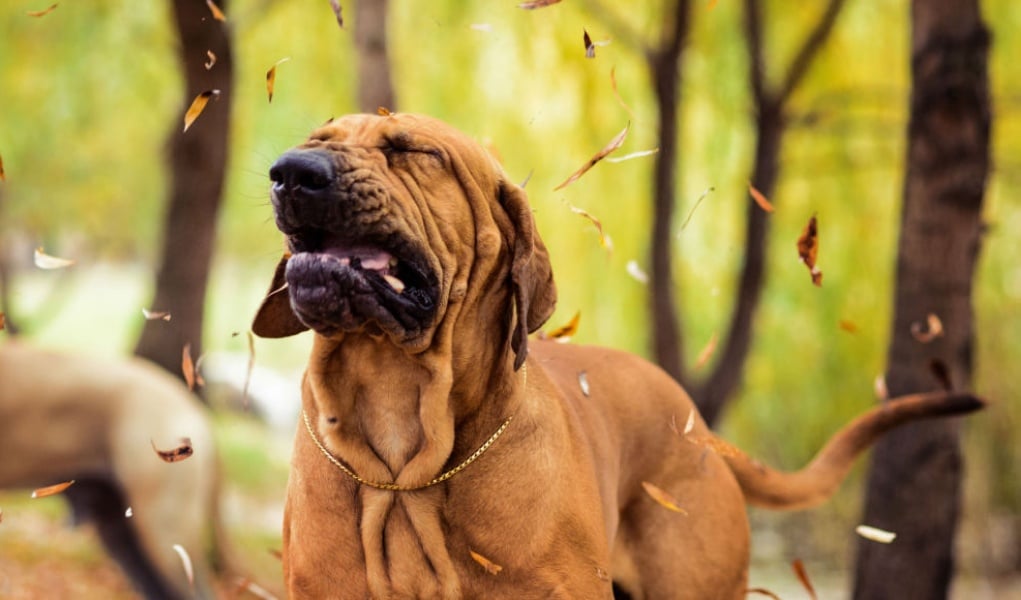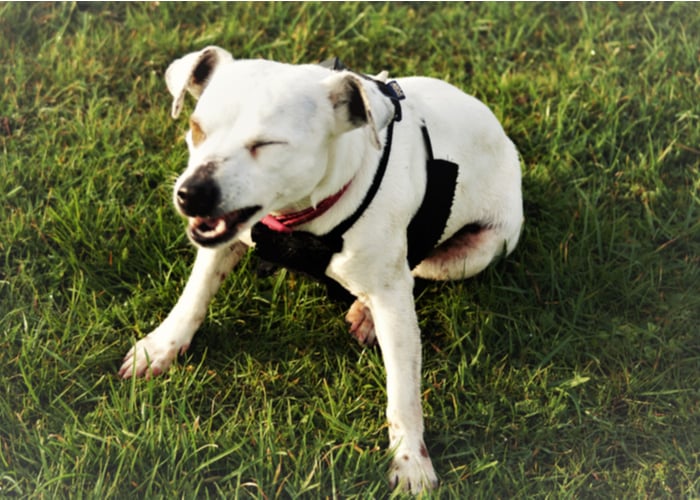If you've ever seen a dog during a fit of reverse sneezing, you know how scary it can be. What is reverse sneezing in dogs, and how do you stop it?
The first thing you need to know is that while it can be nerve-wracking to watch, reverse sneezing is fairly harmless, and there are no long-term effects of a reverse sneezing episode.
During a reverse sneeze, your dog will extend his neck and make a loud snorting sound. It may sound like your pet has something caught in his throat or nasal passage. Some owners mistake reverse sneezing for choking at first.
No one knows the exact cause of reverse sneezing in dogs. What we do know is that dogs with long noses (and narrow nasal passages) seem to suffer from fits of reverse sneezing more than other dogs.
Reverse Sneezing in Dogs: what is it, and how do you stop it?
 What is reverse sneezing in dogs?
What is reverse sneezing in dogs?
Reverse sneezing is a fairly common respiratory condition seen in canines. It is caused when something irritates the nasal, sinus, or pharyngeal passages.
In layman's terms, if the soft palate in the back of your dog's becomes irritated. The soft palate is the muscular area at the back of the roof of your dog's mouth. If you try to feel around with tongue, you'll notice that humans have a soft palate too.
The soft palate assists with swallowing, breathing and vocalizing. As you can imagine, it can be difficult to breathe normally when it becomes irritated.
During a bout of reverse sneezing, your dog will try to extend his neck and expand his chest. He will try to open the airway, but the narrowed trachea will inhibit his ability to breathe.
This is when he will try to inhale forcefully through his nose – basically like sneezing in reverse.
Reverse sneezing produces a loud snorting sound. Your dog is actually inhaling the sneeze. To me, it almost sounds like a goose-honking.
How long does it last?
Sometimes it may take a few minutes for the episode to stop, but it shouldn't take much longer than that. In most cases, it lasts for less than a minute.
ALSO: Dog Breathing Problems – 3 Types and Treatments
 What if it happens often or lasts a long time?
What if it happens often or lasts a long time?
Although longer durations can occur, it's rare for a bout of reverse sneezing to last for more than 5 minutes. It's also rare for your dog to have more than one reverse sneezing episode within 24 hours.
If either of these things happens, I would recommend calling your veterinarian to report it. They probably won't want to see your dog for an office visit, but it's good information for them to have in case the situation gets worse.
Reverse sneezing is almost always nothing to worry about. If it becomes frequent or the episodes begin to get lengthy, it is best to have your dog seen by your veterinarian.
In very rare cases, reverse sneezing in dogs can be a sign of:
- an upper respiratory infection
- a collapsing trachea
- asthma
- heart disease
If the episodes become longer, more severe, or more frequent, your veterinarian may want to have your dog in for an exam. They will likely perform an x-ray of his chest and/or a rhinoscopy to look for problems or abnormalities.
As long as the sneezing fits don't happen often and don't last very long, you've got nothing to worry about. There are no treatments or medications to prevent reverse sneezing.
How to help stop reverse sneezing
I know that when it happens, reverse sneezing in dogs can be a little bit scary. There are a few things that you can do to help calm your pet (and yourself) during these episodes.
- Help him calm down. As scared as you, imagine how your dog is feeling. If he is having trouble breathing, he's going to start to panic. Sit with your dog. Talk to him calmly while petting him gently. This will help to soothe him and his natural reflexes to swallow and clear the irritation will kick in.
- Change your dog's position. If your dog's head is tilted up, tip it down. If your dog's head is tilted down, tip it up. This will help to shift the soft palate and reduce the irritation.
- Make him swallow. Massage your dog's throat by stroking it gently from the chin to the chest. This will trigger a natural response to swallow, which will help to clear the irritant.
- Distract your dog. Try to take his mind off the problem by enticing him with a treat or favorite toy.
- Press down on his tongue. Using your pointer and middle fingers, press down on the middle/back of your dog's tongue. This will make him take a big breath to open his nasal passages.
READ NEXT: Spring Allergies in Dogs – Signs, Treatment and Prevention












